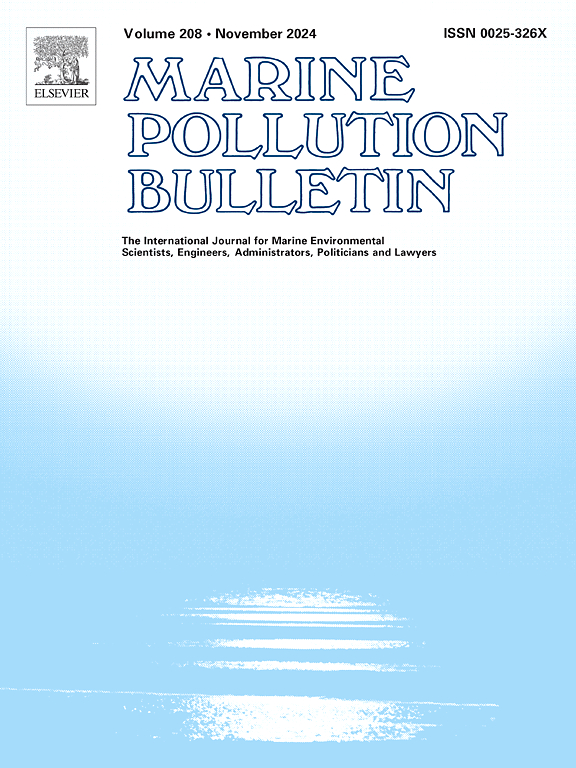Introducing PES porous membrane to establish bionic autocrine channels: A lubricating, anti-wear antifouling coating
IF 5.3
3区 环境科学与生态学
Q1 ENVIRONMENTAL SCIENCES
引用次数: 0
Abstract
As a global challenge, marine biofouling is causing serious economic losses and adverse ecological impacts. In recent years, a variety of promising and environmentally friendly anti-fouling strategies have emerged, among which the excellent anti-fouling performance of bionic autocrine coatings has been recognized. However, bionic autocrine coatings still suffer from uncontrollable secretion behavior, poor mechanical stability, and poor abrasion resistance. Inspired from dolphin skin, this study establishes an antifouling system i-PDMS/PES coating with lubrication based on secretion channels and resistance to abrasion properties by coupling a polyethersulfone (PES) porous membrane to the surface of secretion substance- silicone oil-infused polydimethylsiloxane (PDMS) pre-polymer coating. The secretion behavior of the secreted substances on the coating surface, the tribological properties of the coating surface, and the adhesion properties of marine bacteria and benthic diatoms were explored. The results showed that the secreted substances were rapidly secreted on the surface of the i-PDMS/PES coating to form a continuous lubricating film, and at the same time had an efficient self-replenishing ability, thus that not only effectively reduces the friction coefficient of the coating, but also mitigates the mechanical damage of the coating surface during friction. In additional, the continuous lubrication film formed by autocrine secretion improves the antifouling performance of the coating. Considering the actual application environment of antifouling coatings in the ocean, this study proposes a new solution to the problem of the long-term effectiveness of antifouling coatings.引入PES多孔膜,建立仿生自分泌通道:润滑、抗磨、防污涂层
海洋生物污染是一项全球性挑战,正在造成严重的经济损失和不利的生态影响。近年来,出现了各种有前景的环保防污策略,其中仿生自分泌性涂料的优异防污性能得到了认可。然而,仿生自分泌涂层仍然存在分泌行为不可控、机械稳定性差、耐磨性差等问题。本研究以海豚皮肤为灵感,通过将聚醚砜(PES)多孔膜偶联到分泌物质-注入硅油的聚二甲基硅氧烷(PDMS)预聚体涂层表面,建立了一种基于分泌通道润滑和耐磨性的防污体系i-PDMS/PES涂层。研究了涂层表面分泌物质的分泌行为、涂层表面的摩擦学性能以及海洋细菌和底栖硅藻的粘附性能。结果表明,分泌物质在i-PDMS/PES涂层表面快速分泌,形成连续的润滑膜,同时具有高效的自补充能力,不仅有效降低了涂层的摩擦系数,而且减轻了摩擦过程中涂层表面的机械损伤。此外,自分泌形成的连续润滑膜提高了涂层的防污性能。结合防污涂料在海洋中的实际应用环境,本研究针对防污涂料的长效问题提出了一种新的解决方案。
本文章由计算机程序翻译,如有差异,请以英文原文为准。
求助全文
约1分钟内获得全文
求助全文
来源期刊

Marine pollution bulletin
环境科学-海洋与淡水生物学
CiteScore
10.20
自引率
15.50%
发文量
1077
审稿时长
68 days
期刊介绍:
Marine Pollution Bulletin is concerned with the rational use of maritime and marine resources in estuaries, the seas and oceans, as well as with documenting marine pollution and introducing new forms of measurement and analysis. A wide range of topics are discussed as news, comment, reviews and research reports, not only on effluent disposal and pollution control, but also on the management, economic aspects and protection of the marine environment in general.
 求助内容:
求助内容: 应助结果提醒方式:
应助结果提醒方式:


